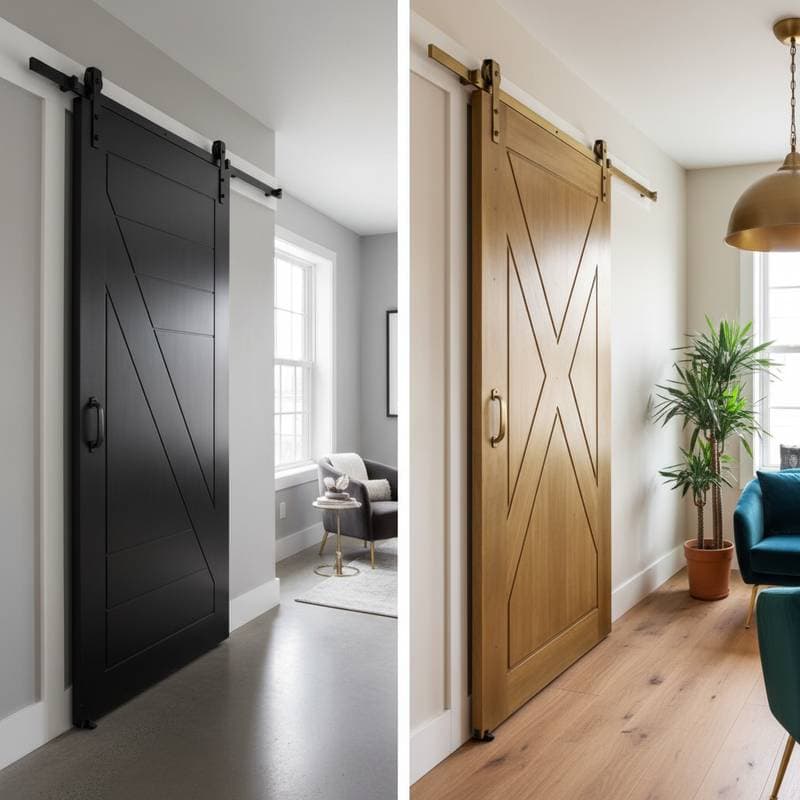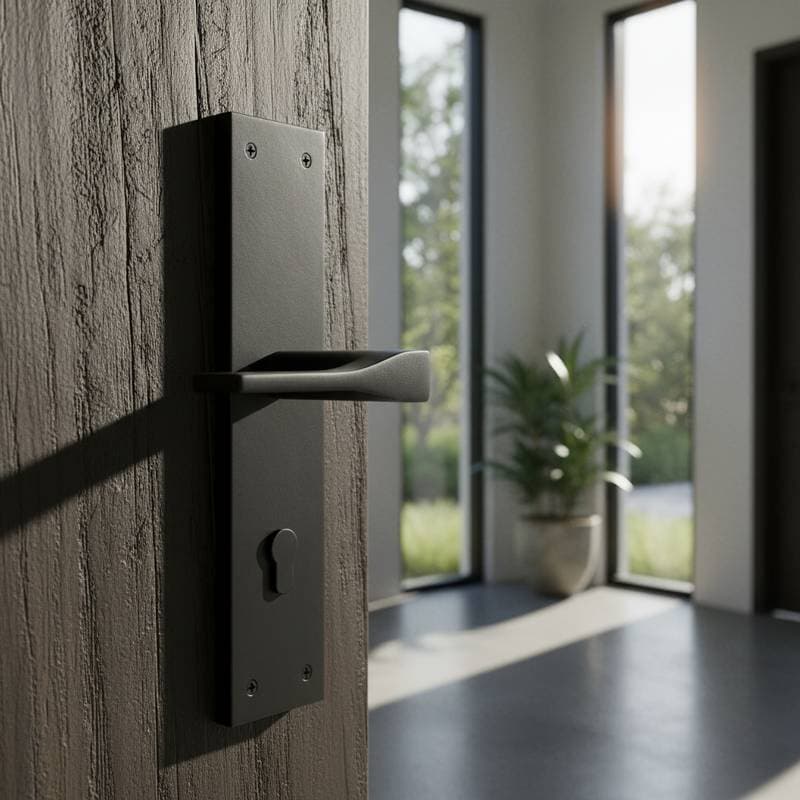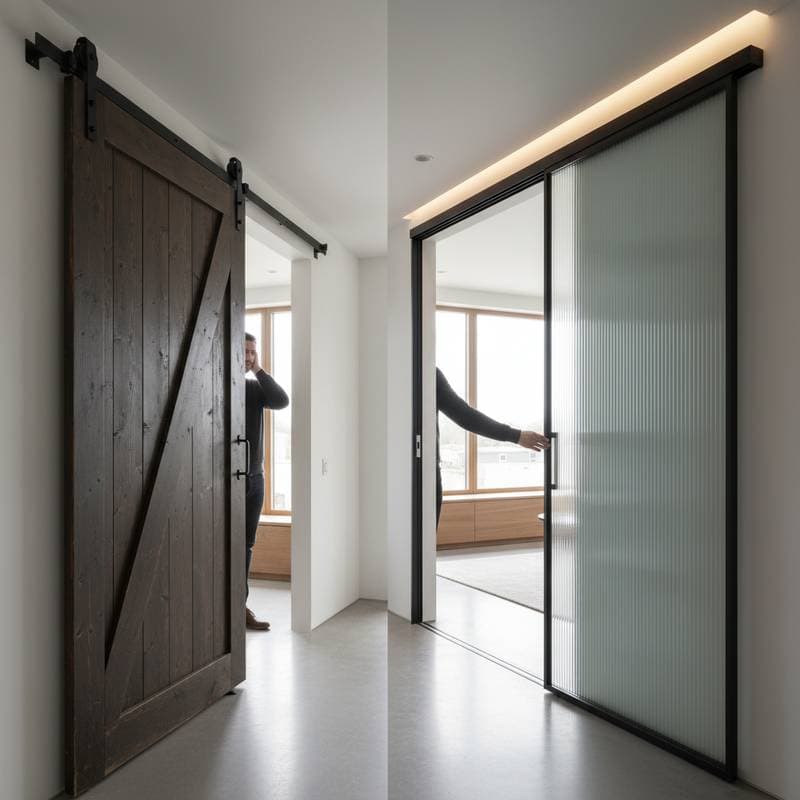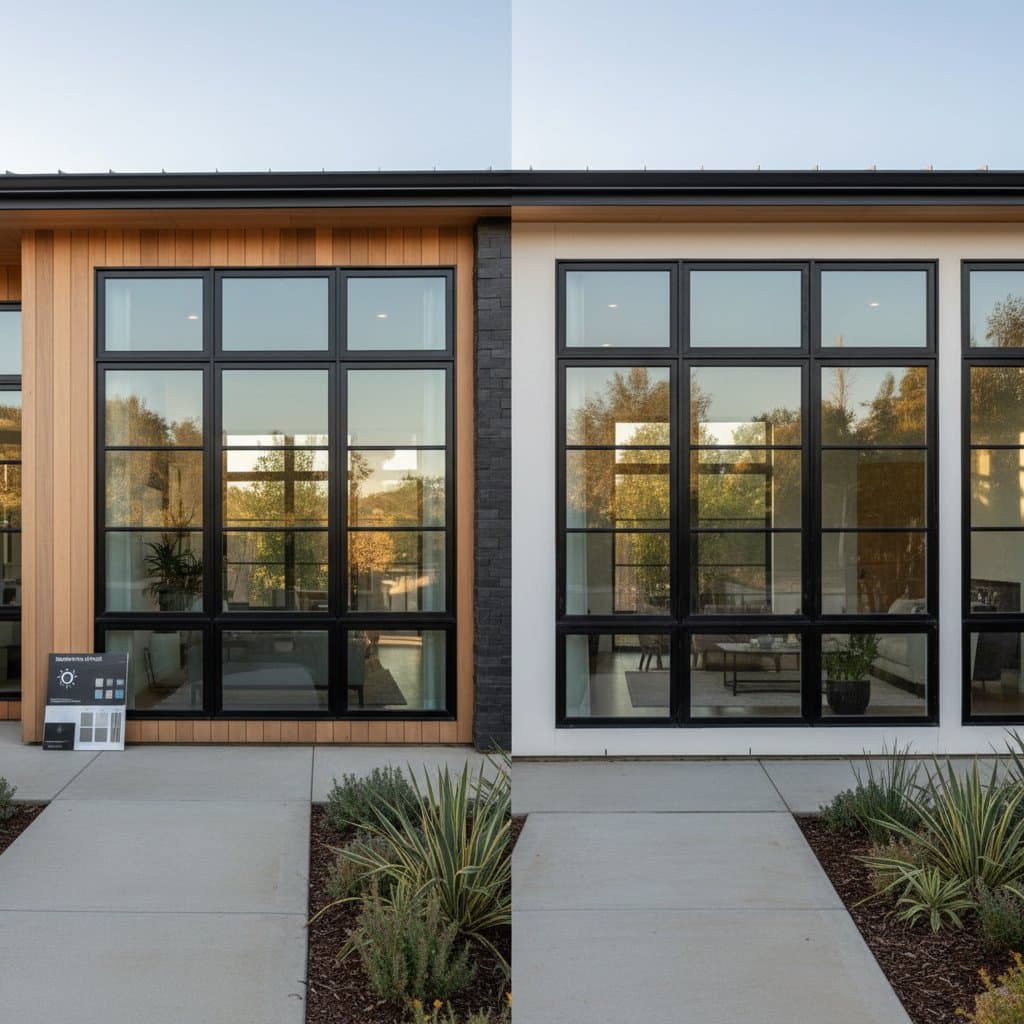Why Barn Door Hardware Embraces Matte Black in 2025
Barn door hardware evolves from simple utility to a key element in contemporary interior design. Sliding doors now integrate seamlessly into living spaces, and matte black finishes capture widespread attention. This preference stems from both visual harmony and practical benefits, allowing homeowners to align hardware choices with daily routines and long-term aesthetic goals. Selection extends beyond mechanics to embody personal style and home performance.
The Allure of Matte Finishes
Matte black hardware delivers a subtle, integrated appearance suitable for numerous interior aesthetics. It minimizes light bounce, eliminating harsh glare in sunlit rooms and creating a calmer visual environment. For instance, in open-plan kitchens, this finish blends hardware into cabinetry without drawing undue focus.
Matte surfaces harmonize with materials ranging from aged barn wood to sleek engineered panels. They suit minimalist setups as well as rustic farmhouse themes, offering a poised neutrality that enhances rather than overshadows surrounding elements. Many prefer this low-maintenance quality, as it eliminates the need for ongoing buffing to sustain shine.
Versatility in Design and Pairing
Matte black barn door hardware adapts to virtually any color scheme. It enhances warm earth tones in wooden doors, contrasts sharply with crisp white walls, and balances cool grays in urban lofts. Designers leverage this neutrality to layer textures, such as combining it with linen upholstery or stone accents, without clashing.
This adaptability proves ideal for evolving interiors. Homeowners who update paint colors or swap furniture find matte black remains relevant across seasons. It serves as a stable anchor, supporting transitions from bohemian vibes to polished modern looks without hardware replacement.
Strength of Materials and Finish Integrity
Advancements in coating methods bolster the popularity of matte black hardware. Powder-coated layers deliver even, resilient protection against abrasions and rust, while anodizing adds molecular-level durability. These techniques shield against everyday contaminants like oils from hands or humidity in bathrooms.
Sliding door components endure constant interaction, from opening closets to dividing home offices. Matte black conceals minor wear, such as light scuffs, far better than reflective metals, preserving uniformity. Select hardware from reputable suppliers to ensure these finishes hold up under frequent operation.
Balancing Cost with Lasting Value
Matte black options typically occupy a moderate price tier, offering premium aesthetics at accessible levels. Initial investments range from basic kits under $100 to heavy-duty sets around $300, depending on track length and wheel capacity. Savings accumulate through reduced upkeep, as routine care involves only mild soap and water.
In terms of property enhancement, this finish contributes to broad market appeal during sales. It conveys thoughtful craftsmanship and versatility, attracting buyers who seek non-fleeting updates. For those budgeting renovations, matte black maximizes return by combining upfront economy with sustained performance.
Aligning with Daily Life and Upkeep Needs
Upkeep preferences shape hardware decisions in active homes. Glossy alternatives show every fingerprint or splash, necessitating regular wipes. Matte black, however, masks such traces, ideal for high-traffic areas like hallways or pantries where doors see heavy use.
Consider family dynamics: parents with young children benefit from a finish that stays presentable amid playtime chaos. Entertaining hosts appreciate its poise under varied lighting, from soft LEDs to daylight. These traits fuel its rise, as users prioritize hardware that supports lifestyle demands without added chores.
Steps for Smooth Installation
Effective barn door setup starts with site assessment. Measure wall clearance for track placement, confirm ceiling joists can bear the load, and calculate door mass to select appropriate wheel ratings, often 50 to 200 pounds per panel. Matte black pieces warrant careful transport; use padded cloths to avert surface marks during handling.
Secure the track with lag screws into studs for stability, ensuring perfect levelness with a laser tool. Hang the door, adjust rollers for even glide, and install floor guides to prevent swinging. Test full travel multiple times, lubricating wheels sparingly with silicone spray if needed. This methodical approach safeguards the finish and guarantees quiet, reliable function.
Sustaining Performance Over Years
Routine care keeps matte black hardware in top condition. Weekly track dusting with a soft brush avoids grit accumulation that impedes sliding. Steer clear of harsh chemicals; opt for pH-neutral solutions to clean rollers and straps.
As interiors change, such as refinishing floors or adding wallpaper, matte black hardware integrates effortlessly. Its compatibility reduces waste, aligning with sustainable practices by extending component lifespan. Periodic inspections for loose bolts ensure continued smooth operation.
Selecting the Ideal Hardware
Homeowners face key decisions when choosing barn door hardware. Evaluate these elements:
- Style alignment: Ensure the finish coordinates with door grain and room palette, like matte black against honey-toned pine.
- Build quality: Prioritize steel or aluminum alloys with reinforced welds for heavy doors.
- Care demands: Select options that forgive minor neglect, fitting busy schedules.
- Financial fit: Compare total costs, including tools for DIY versus professional fitting.
- Mounting feasibility: Verify structural support, consulting contractors for masonry walls.
Matte black excels across these areas, delivering cohesive design, toughness, and simplicity.
Maximizing Your Hardware Investment
To fully leverage matte black barn door hardware, integrate it thoughtfully from the outset. Pair it with soft-close mechanisms for quieter operation in bedrooms, or extend tracks for bi-fold configurations in tight spaces. Track seasonal trends, but focus on pieces that transcend fads for decade-long service.
This choice not only refines immediate aesthetics but also builds a resilient foundation for future adaptations. Homeowners gain confidence in a feature that evolves with their needs, blending form and function seamlessly.






